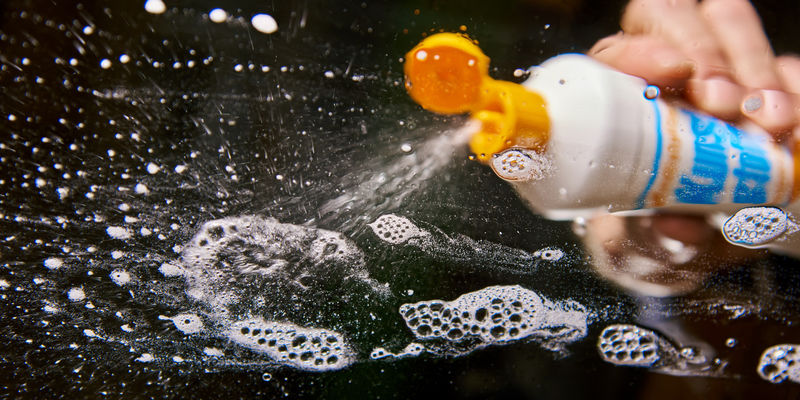Keeping your acrylic sheets clean and well-maintained is essential for preserving their clarity and longevity. In this guide, we’ll show you how to clean acrylic sheet effectively and provide tips on maintaining its pristine condition.
1. Dusting
To effectively dust your acrylic sheets, always use a damp method. Mix one teaspoon of dishwashing liquid (make sure it doesn’t contain hand lotions like aloe or lanolin) with a pint of water. Apply this solution with a spray bottle and wipe it off with a clean cotton flannel or jersey cloth. This approach will leave your acrylic sheet dry, glossy, and smooth.
2. Cleaning
When learning how to clean acrylic sheet, it’s crucial to use the right techniques. Wash the acrylic sheet with plenty of mild soap or detergent and lukewarm water, using your bare hand to feel and dislodge any caked dirt or mud. A soft cloth, sponge, or chamois may be used, but only as a means of carrying water to the plastic. Rinse well and dry by blotting with a clean damp cloth or chamois.
Avoid rubbing a dirty surface with a dry cloth, as this will scratch the acrylic and create an electrostatic charge that attracts dust. Instead, wipe with a damp chamois to remove both the charge and the dust.
Avoid Using the Following:
- Window cleaning fluids
- Scouring compounds
- Leaded or ethyl gasolines
- Benzene, acetone, carbon tetrachloride
- Fire extinguisher or de-icing fluid
- Lacquer thinners or other strong solvents
If you need to remove tar, grease, or paint, opt for a good grade of fast evaporating thinner (oil based), kerosene, or other aliphatic hydrocarbon compounds.
3. Polishing
If your acrylic sheet has minor scratches, they can often be removed or minimized with a good polish. Dampen a small pad of soft cotton flannel with water and gently rub the scratched area using a back-and-forth or circular motion. Avoid rubbing too hard in one spot. It may take several applications, but the clarity of the acrylic should improve over time.
After polishing, wipe the surface with a clean, damp cloth to remove any static charge that might attract dust. Avoid using household spray waxes, as many contain chemicals that could damage the acrylic.
Note: We offer an anti-static cleaner and a fine scratch remover specifically designed for acrylic sheets, which can be found in our shop.
4. Buffing
For deeper scratches that polishing can’t handle, buffing is often the solution. The best results come from using cotton buffing wheels with a suitable buffing compound. These compounds usually contain fine alumina or similar abrasives combined with wax or grease binders, and polishing tallow.
If your buffing wheels have been used before, clean them by running them against a sharp metal edge. Start by spinning the buffing wheel and touching a stick of tallow to the wheel. Then, apply the buffing compound and lightly press the edge of the spinning wheel against the acrylic surface. Keep the wheel moving and use only light pressure to avoid overheating and softening the plastic.
Buff along and across any scratches, continuing until they are removed. Afterward, clean off any remaining buffing compound with a fresh buffing wheel and apply a coat of wax for protection. If scratches are too deep to be removed by buffing, you may need to sand the surface, but this should only be done if you have access to mechanical buffing equipment, as hand polishing alone may not restore the lustre.
Taking care of your acrylic sheets ensures they remain clear and attractive for years to come. Whether it’s a light dusting, thorough cleaning, or removing stubborn scratches, following these steps will help maintain your acrylic in perfect condition.

